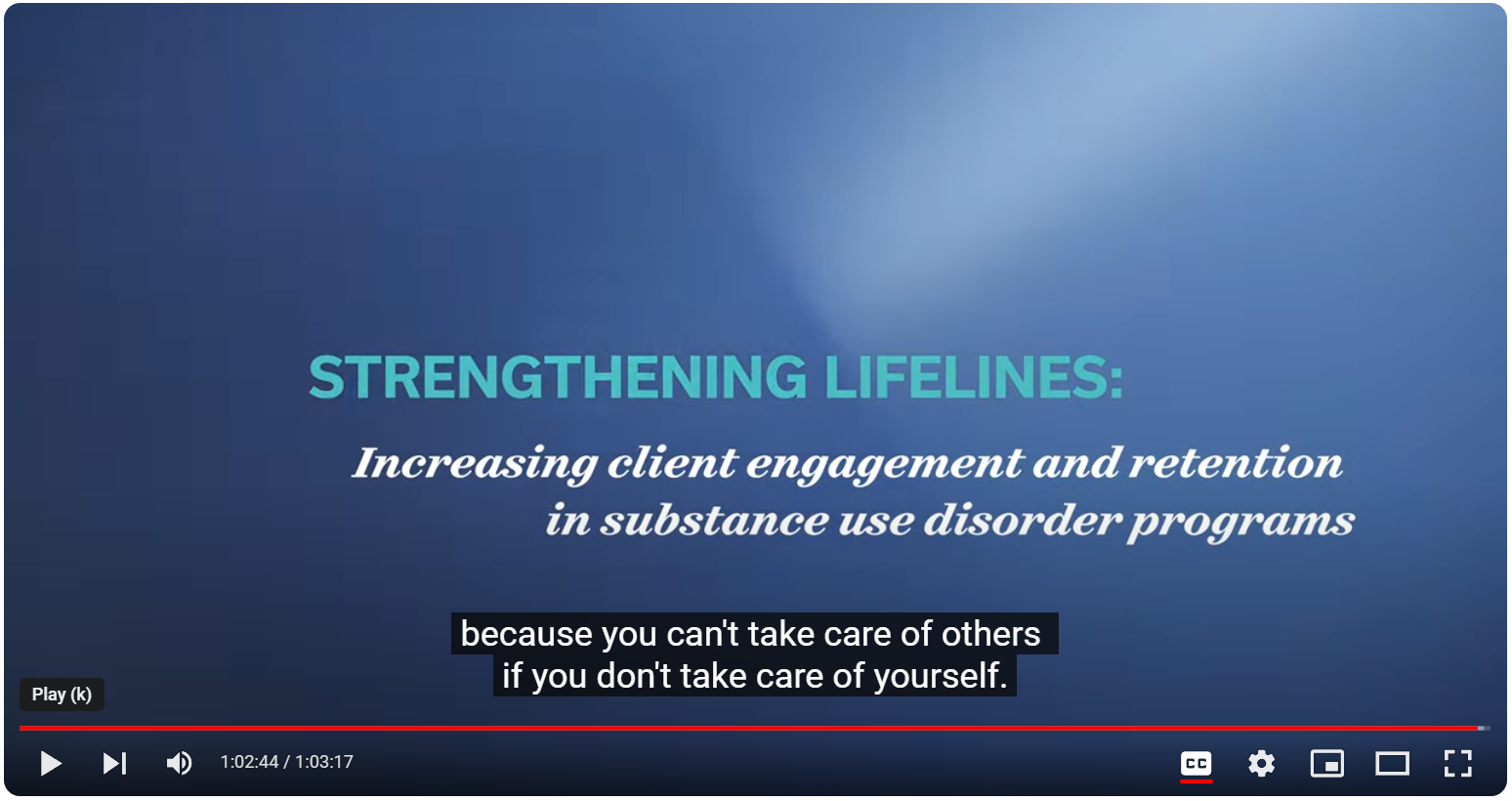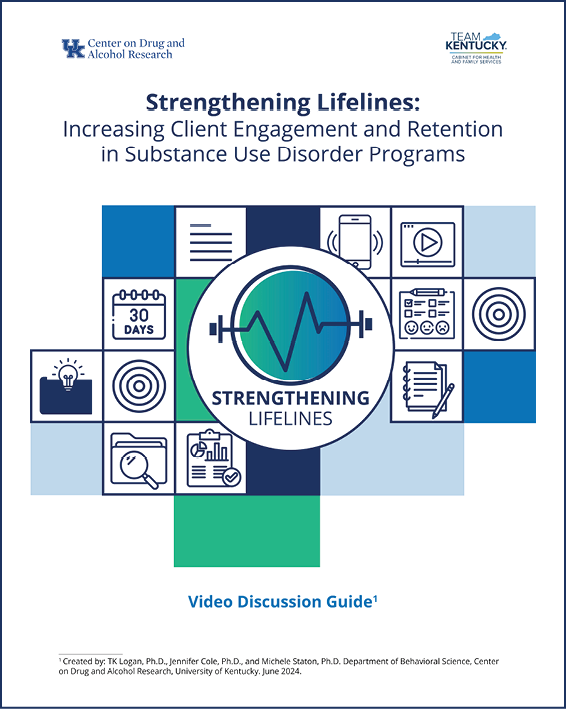Video

Video link directs to youtube: Strengthening Lifelines Video
Strengthening Lifelines: Increasing Client Engagement and Retention in Substance Use Disorder Programs video has three main goals including to: (1) present key barriers to SUD program engagement based on national and Kentucky research; (2) describe how every person in the SUD program matters for the experience of clients; and (3) stimulate discussion within individual programs about identifying barriers to client engagement and potential solutions that can be made with small changes or targeted funding.
For more information please contact TK Logan, Ph.D. (tklogan@uky.edu) or Michele Staton, Ph.D. (mstaton@uky.edu)
Discussion Guide

This discussion guide is a companion to the video: Strengthening Lifelines: Increasing Client Engagement and Retention in Substance Use Disorder Programs. This discussion guide has three main objectives including to provide: (1) contextual information and research underlying the key themes in the video; (2) questions to guide discussion in response to the video themes as a whole as well as for each of the five video segments; and (3) infographic handouts summarizing themes from the video. (Download the PDF)
Reviews
What an incredible production of inspiration for those in recovery and for those doing the work.
Thank you so much for allowing comprehend to be a part of this. We are honored to have worked with this team to be a part of the message. We appreciate you and this team and the incredible amount of work that you put into this!
I really thought you all did a great job with it and it will be great for more people to get to see it. Thank you all for inviting me!
Congratulations on putting together such an informative and compelling film. |
Background Research:
Overall report:
This overall report summarized results of four separate studies that serve as an important interim step in identifying barriers to SUD program engagement and making recommendations to reducing some of those barriers as well as other steps that need to be taken to fully identify and document barriers to SUD program engagement. The integrated conclusions and recommendations for the four research projects are organized in response to five main questions. Overall recommendations are noted as well. (Download the PDF)
Secret shopper report:
One barrier to substance use disorder (SUD) recovery may be related to the ability to access SUD treatment quickly. Often the experiences of consumers in trying to enter into a SUD program are hidden from general public view. Thus, this secret shopper project was implemented to better understand the process and the barriers consumers may experience as they make their first appointment for SUD treatment in Kentucky. (Download the PDF)
Provider survey report:
Although not all individuals with substance use disorders (SUD) enter SUD programs, SUD programs have been helpful for individuals in their recovery journey. However, there are a number of barriers to SUD program engagement. Consumers can experience personal barriers such as the lack of motivation for recovery. Another personal barrier is the lack of resources such as stable housing or transportation which can make SUD program engagement more
challenging. However, consumers can also experience systemic-level or program-level barriers.
Because systemic and program-level barriers could be addressed with more targeted funding or with policy or practice changes, it is important to identify and document them. This
survey examined provider perceptions of personal, program, and systemic barriers to client engagement in SUD programs as well as organizational barriers that make it more difficult to effectively work with SUD clients. (Download the PDF)
Consumer survey report:
Even though treatment for substance use disorders (SUD) can provide a number of benefits and advance recovery, there are many reasons people may not begin or stay in treatment once they start. The goal of the Consumer Survey Project is to learn more about the facilitating factors and barriers associated with entering substance use treatment from individuals who have either recently thought about treatment and decided not to go, or entered treatment and dropped out. The Consumer Survey Project included the following primary objectives: (1) understand the restrictions and barriers at the program level that discourage treatment entry and/or engagement from the perspectives of individuals with SUD; and (2) explore personal barriers to treatment related to SUD program entry or dropout. (Download the PDF)
Performance indicators report:
The purpose of this Performance Indicator Project Report is to: (1) identify key SUD performance indicators recommended by the research literature; (2) describe Kentucky’s current efforts to measure performance indicators for SUD programs; (3) conduct a secondary data analysis of existing client-level outcome data from outcome evaluations from three types of SUD programs; (4) present profiles of performance indicators for each CMHC region, all of Recovery Kentucky programs, and Department of Corrections prison SAP using existing
data; and (5) provide recommendations for Kentucky’s use of performance indicators of SUD programs. (Download the PDF)
|